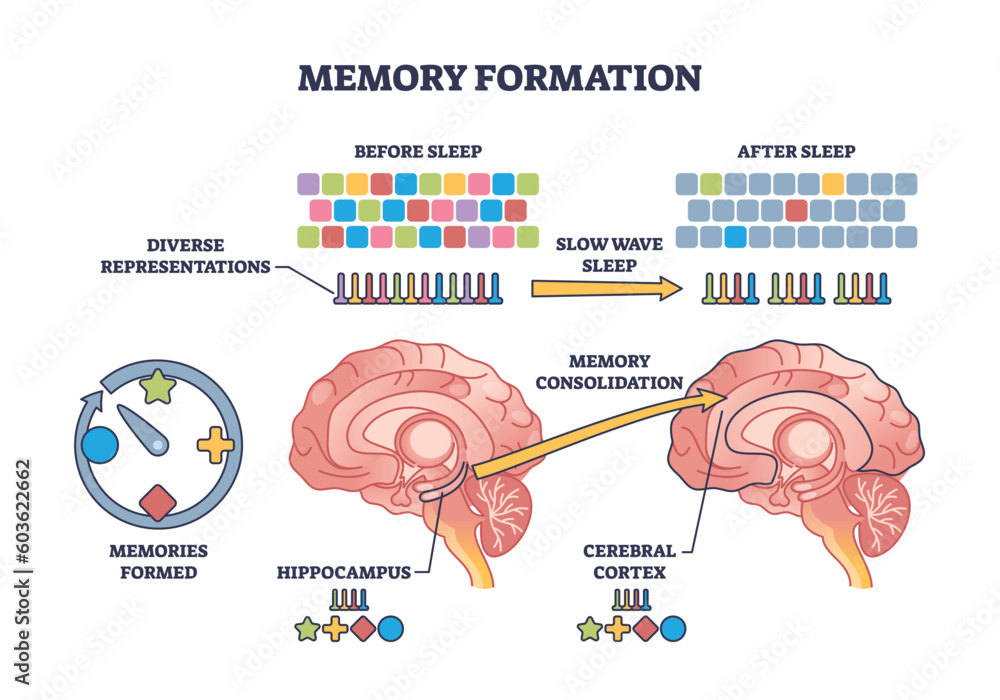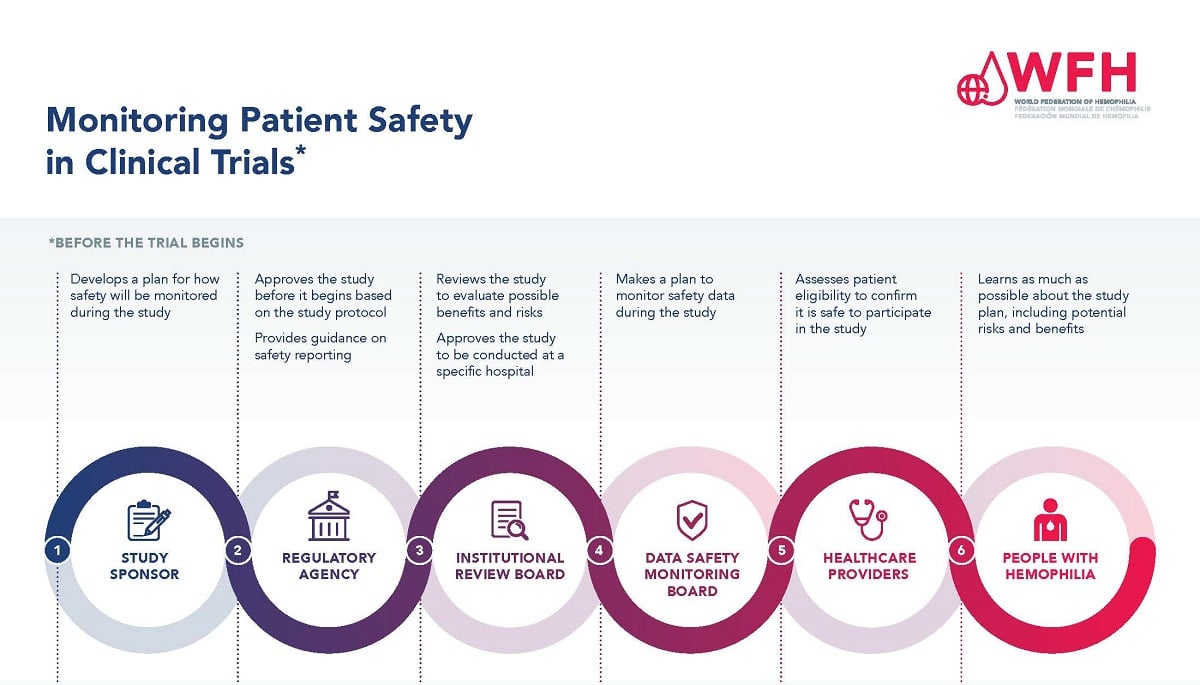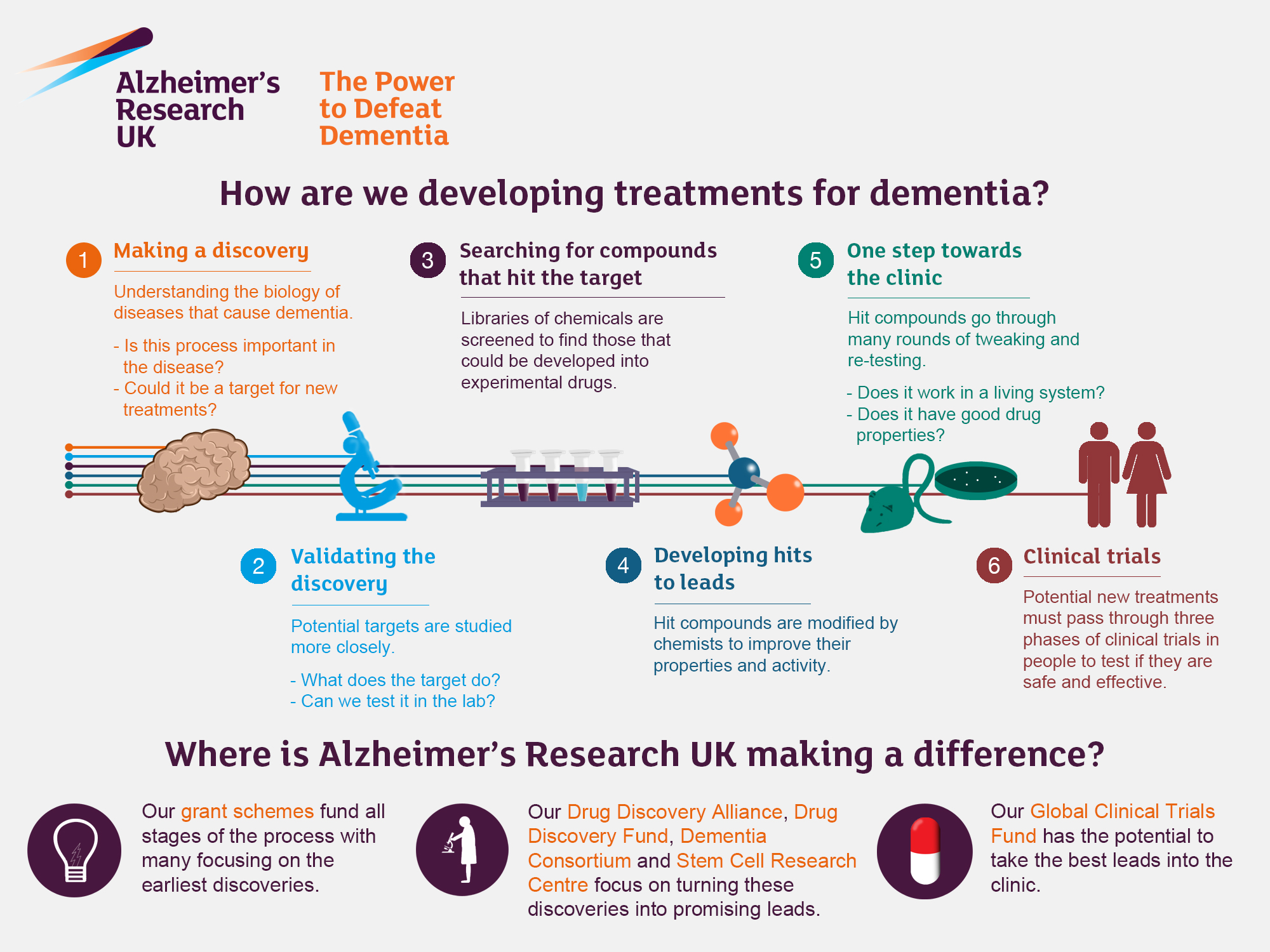Memory formation is a complex process that plays a crucial role in our daily lives, shaping how we learn and interact with the world around us. Recent breakthroughs in this field, particularly by a team at Harvard, have shed light on the intricate mechanisms behind this process, including the essential role of synaptic plasticity in building learned behaviors. Their innovative method of mapping the molecular basis of memory promises to bring new insights that could revolutionize dementia treatment and aid those suffering from neurological disorders. With a deeper understanding of how memories are created and maintained in the brain, researchers are hopeful for advancements in therapeutic approaches that target the underlying causes of memory impairments. This pioneering research signifies a vital step towards unlocking the mysteries of memory and its profound impact on our lives.
The process of remembering and learning—often referred to as cognitive memory development—encompasses a series of neurological events that transform experiences into lasting knowledge. Through advanced techniques, scientists are now able to delve into the synaptic connections that facilitate this transformation, providing clarity on how synaptic changes influence our learned behaviors. As researchers explore the dynamics of memory creation, particularly in the context of reminding us of our past experiences, their insights might be instrumental in developing effective treatment strategies for conditions like dementia and other neurological disorders. These scientific advancements echo Harvard research that highlights the significance of synaptic plasticity in shaping the architecture of memory. Therefore, understanding memory formation not only enhances our grasp of human cognition but also opens avenues for innovative medical therapies.
Understanding Memory Formation in the Brain
Memory formation is a complex process that hinges on the intricate interactions of neurons in the brain. As researchers delve deeper into the mechanisms of memory, the significance of synaptic plasticity emerges as a focal point. This process facilitates the strengthening or weakening of synaptic connections, allowing for adaptive responses to learning and experiences. Through groundbreaking techniques, scientists are now able to observe memory formation at unprecedented resolutions, shedding light on how memories are encoded and retrieved.
Recent advancements, particularly those stemming from Harvard’s research team, reveal how memories are physically embedded within our neuronal architecture. Techniques such as Extracellular Protein Surface Labeling in Neurons (EPSILON) have allowed researchers to closely monitor the behavior of key proteins like AMPARs, which play a pivotal role in synaptic plasticity. Understanding these interactions not only enhances our comprehension of memory but also opens up avenues for addressing neurological disorders that affect memory, such as dementia.
The Role of Synaptic Plasticity in Learning
Synaptic plasticity is the cornerstone of learning, serving as the biological mechanism through which experiences develop into memories. Every day, through various interactions and stimuli, the brain reorganizes itself based on the strength of synaptic connections, and this adaptability is crucial for learning new information. The Harvard team’s research highlights how specific proteins involved in synaptic transmission significantly impact our ability to learn, essentially laying the groundwork for all learned behaviors.
By using state-of-the-art techniques, researchers have begun to unravel the complexities of synaptic changes during learning processes. Their findings suggest that synaptic adjustments are not merely reactions but are regulated by specific patterns, resulting in different forms of memory. This newfound understanding provides crucial insights into treating neurological disorders, as targeting synaptic plasticity mechanisms could lead to innovative dementia treatment strategies that improve memory retention.
Mapping Synaptic Changes Over Time for Therapies
The innovative EPSILON technique enables researchers to track the history of synaptic plasticity over time. This capability is essential for understanding how memories are formed and maintained. By monitoring the dynamic changes in synaptic strength associated with specific learning experiences, scientists can piece together the timeline of memory formation. Such detailed mapping highlights the rules that govern synaptic modifications, which could be crucial in developing therapies for conditions marked by memory impairment.
Research utilizing EPSILON has already shown promising results in various learning paradigms, such as contextual fear conditioning in mice. By correlating the movements of AMPARs with neural activity markers, researchers have begun to unveil the relationships between synaptic changes and the formation of lasting memory traces. These insights are critical for understanding neurological disorders and refining dementia treatments that harness the brain’s inherent ability to reorganize and adapt.
Harvard Research: Innovations in Neuroscience
The recent research conducted at Harvard pushes the boundaries of our understanding of neuroscience. By utilizing innovative imaging techniques and molecular tools, such as HaloTag technology, researchers are making significant strides in mapping the neurological underpinnings of memory. This basic science approach, spun from years of studying fundamental biological processes, highlights the interconnectedness of various scientific disciplines in enhancing human health. The findings underscore the importance of supporting long-term research initiatives that may yield unexpected breakthroughs in memory-related therapies.
Harvard’s commitment to advancing neuroscience is evident as researchers distribute their findings and methodologies globally. With facilities worldwide adopting the EPSILON technique, a collective effort to explore the mechanisms of memory continues to grow. These collaborations foster an environment where diverse cognitive phenomena can be examined, ultimately contributing to therapeutic strategies aimed at improving cognitive functioning and addressing debilitating neurological disorders.
The Impact of Neurological Disorders on Memory
Neurological disorders, particularly those affecting memory like dementia, pose significant challenges to individuals and society. Conditions such as Alzheimer’s disease exemplify how synaptic dysfunction disrupts memory processes, leading to cognitive decline. Understanding the molecular aspects of how memory is formed and disrupted is essential for developing effective treatment strategies. Research into synaptic plasticity and molecular interactions within neurons is fundamental in tackling these disorders, as it could guide the creation of targeted therapies.
As scientists delve deeper into the mechanisms behind memory formation, the implications for treating neurological disorders become increasingly apparent. By identifying specific proteins and pathways involved in synaptic plasticity, researchers may devise strategies to restore normal synaptic function, offering hope for patients suffering from memory loss. This ongoing research not only highlights the urgent need for effective dementia treatment but also emphasizes the potential for innovative therapeutic modalities that leverage our understanding of brain plasticity.
Future Directions of Memory Research
The future of memory research is bright, particularly with the advent of advanced techniques like EPSILON. As researchers continue to explore the intricate dynamics of synaptic plasticity, they uncover new layers of complexity in how memories are formed and stored. This foundational knowledge paves the way for innovative therapeutic approaches to treat memory-related disorders. With insights gained from both basic and applied research, scientists are equipped to propose solutions that could transform the lives of those affected by these debilitating conditions.
Moreover, the responsive nature of memory research to emerging technologies provides unique opportunities for collaboration across disciplines. As new methods and tools are developed, the potential to understand cognitive functions and their disruptions in depth increases. This interconnected research landscape promises advancements in neuroscience that could lead to effective interventions, enhancing cognitive resilience and combating the effects of neurological disorders.
Advancing dementia treatment through scientific discovery
Recent discoveries in memory formation and synaptic plasticity hold considerable promise for advancing dementia treatment. Understanding how synaptic connections function is crucial in addressing the debilitating effects of disorders like Alzheimer’s disease. With innovative techniques to visualize and track synaptic changes during memory formation, scientists can develop specialized therapies that target the underlying dysfunctions accompanying dementia.
The integration of findings, such as those from Harvard research into memory dynamics, equips clinicians with the scientific knowledge needed to approach dementia treatment more holistically. By aligning therapeutic strategies with the biological processes governing memory, there is potential for significant improvement in patient care and outcomes. These advancements encourage ongoing investment in research to unlock further opportunities for treating neurological disorders effectively.
The Neurobiology of Learning and Behavior
The neurobiology of learning encompasses the mechanisms by which experiences shape our behaviors throughout life. This intricate process involves changes at the synaptic level, where the brain adapts based on experiences. Understanding learned behaviors requires a deep dive into the biochemical interactions and neural circuitry that underpin these adaptations. Recent findings from advanced imaging technologies reveal the enabling role of synaptic plasticity in learning, making it the focus of ongoing research.
As researchers unravel the pathways that facilitate learning, the implications extend to educational strategies and interventions. Insights from neuroscience inform how learning environments can be structured to enhance synaptic efficiency, optimize memory retention, and cultivate effective learning behaviors. By bridging neuroscience with education, we can foster environments that promote lasting learning experiences and help individuals adapt to new information.
Insights from Harvard’s Memory Research
Harvard’s innovative research into memory mechanisms shines a spotlight on the critical components of synaptic plasticity and its role in learning. By utilizing methods such as EPSILON, researchers are uncovering the molecular foundations that define how memories are formed and maintained. These insights contribute to a growing body of knowledge that is essential for tackling memory-related disorders like dementia and Alzheimer’s.
Through detailed mapping of synaptic processes, researchers are able to extrapolate findings that may guide the development of new therapeutic strategies. The emphasis on molecular interactions within neurons offers a clear pathway for advancing treatment options, and as this research expands, it represents a crucial step towards improving cognitive health on a broader scale. Harvard’s approach to studying memory formation not only enhances our understanding but also reinforces the necessity of interdisciplinary research for health breakthroughs.
Frequently Asked Questions
What is the role of synaptic plasticity in memory formation?
Synaptic plasticity refers to the ability of synapses, the connections between neurons, to strengthen or weaken over time, which is crucial for memory formation. This dynamic process allows the brain to adapt to new information and is facilitated by proteins known as AMPARs. Understanding this relationship is essential for developing therapies for neurological disorders.
How does Harvard research contribute to our understanding of learned behaviors and memory formation?
Harvard research has provided groundbreaking insights into how learning and memories are formed, particularly through techniques like EPSILON, which maps synaptic interactions at high resolutions. Such studies illuminate the molecular mechanisms behind learned behaviors, offering valuable information for treating conditions like dementia.
What is the significance of the EPSILON technique in studying memory formation?
The EPSILON technique, developed by Harvard researchers, allows for detailed mapping of synaptic plasticity, showing how connections between neurons change during memory formation. This innovation provides a clearer understanding of the dynamics of memory at the molecular level and could lead to new treatments for neurological conditions.
Can synaptic plasticity help in developing dementia treatments?
Yes, insights gained from studying synaptic plasticity through advanced techniques like EPSILON can inform new therapeutic strategies for treating dementia. By understanding how memories are formed and maintained at the synaptic level, researchers can develop targeted interventions that address the underlying causes of memory impairment in dementia patients.
In what ways can the study of memory formation impact neurological disorder treatments?
Studying memory formation allows researchers to identify key processes that go awry in neurological disorders. Techniques such as EPSILON reveal how synaptic changes correlate with memory retention and learning, paving the way for innovative treatments that could restore or enhance cognitive function in patients suffering from conditions like Alzheimer’s or other dementias.
What connection exists between AMPARs and synaptic plasticity in memory formation?
AMPARs, or alpha-amino-3-hydroxy-5-methyl-4-isoxazolepropionic acid receptors, play a pivotal role in synaptic plasticity by mediating synaptic transmission and strengthening synaptic connections during memory formation. Their behavior and movement, which can now be tracked using advanced techniques like EPSILON, are essential for understanding how the brain encodes memories.
How is research on memory formation advancing our understanding of cognitive functions?
Current research, particularly from institutions like Harvard, is enhancing our understanding of cognitive functions by mapping the intricate processes of memory formation and synaptic plasticity. This knowledge is vital for addressing learning and memory deficits commonly observed in various neurological disorders.
| Key Point | Details |
|---|---|
| Groundbreaking Technique | Harvard researchers have developed a new method to map how learning and memory are formed. |
| EPSILON Technique | Extracellular Protein Surface Labeling in Neurons (EPSILON) maps proteins important for synaptic transmission. |
| Synaptic Plasticity | Key process allowing the brain to adapt by strengthening and modulating connections between neurons. |
| Role of AMPARs | AMPARs are crucial for synaptic plasticity and thus play a vital role in memory formation. |
| Research Collaboration | The research involved multiple scholars and was partially supported by the National Institutes of Health. |
| Clinical Implications | The findings could lead to new treatments for neurological disorders like dementia. |
Summary
Memory formation is a complex process that involves various molecular mechanisms in the brain. Recent research highlights the innovative EPSILON technique developed by Harvard researchers, which allows for precise mapping of synaptic behavior, shedding light on how memories are established. The insights gained from this groundbreaking work could pave the way for new therapies targeting memory-related disorders.



